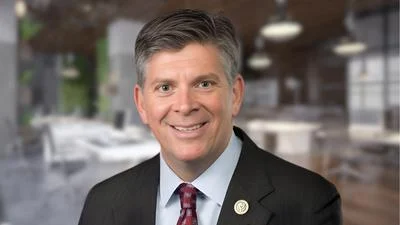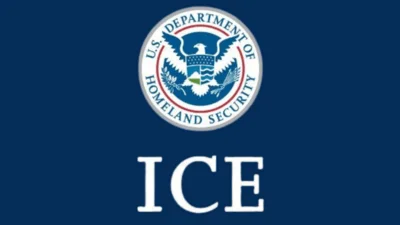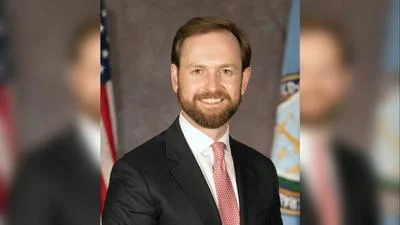The Congressional Record is a unique source of public documentation. It started in 1873, documenting nearly all the major and minor policies being discussed and debated.
“SOUTH FLORIDA CLEAN COASTAL WATERS ACT OF 2019” mentioning the U.S. Dept. of Commerce was published in the House of Representatives section on pages H8010-H8013 on Sept. 26, 2019.
The Department includes the Census Bureau, which is used to determine many factors about American life. Downsizing the Federal Government, a project aimed at lowering taxes and boosting federal efficiency, said the Department is involved in misguided foreign trade policies and is home to many unneeded programs.
The publication is reproduced in full below:
SOUTH FLORIDA CLEAN COASTAL WATERS ACT OF 2019
Ms. JOHNSON of Texas. Mr. Speaker, I move to suspend the rules and pass the bill (H.R. 335) to require the Inter-Agency Task Force on Harmful Algal Blooms and Hypoxia to develop a plan for reducing, mitigating, and controlling harmful algal blooms and hypoxia in South Florida, and for other purposes, as amended.
The Clerk read the title of the bill.
The text of the bill is as follows:
H.R. 335
Be it enacted by the Senate and House of Representatives of the United States of America in Congress assembled,
SECTION 1. SHORT TITLE.
This Act may be cited as the ``South Florida Clean Coastal Waters Act of 2019''.
SEC. 2. SOUTH FLORIDA HARMFUL ALGAL BLOOMS AND HYPOXIA
ASSESSMENT AND ACTION PLAN.
(a) In General.--The Harmful Algal Bloom and Hypoxia Research and Control Act of 1998 (Public Law 105-383; 33 U.S.C. 4001 et seq.) is amended--
(1) by redesignating sections 605 through 609 as sections 606 through 610, respectively; and
(2) by inserting after section 604 the following:
``SEC. 605. SOUTH FLORIDA HARMFUL ALGAL BLOOMS AND HYPOXIA.
``(a) South Florida.--In this section, the term `South Florida' means--
``(1) all lands and waters within the administrative boundaries of the South Florida Water Management District;
``(2) regional coastal waters, including Biscayne Bay, the Caloosahatchee Estuary, Florida Bay, and Indian River Lagoon; and
``(3) the Florida Reef Tract.
``(b) Integrated Assessment.--Not later than 540 days after the date of enactment of the South Florida Clean Coastal Waters Act of 2019, the Task Force, in accordance with the authority under section 603, shall complete and submit to Congress and the President an interim integrated assessment. Not later than 3 years after such date of enactment, the Task Force shall finalize, and submit to Congress and the President, such assessment. Such assessment shall examine the causes, consequences, and potential approaches to reduce harmful algal blooms and hypoxia in South Florida, and the status of, and gaps within, current harmful algal bloom and hypoxia research, monitoring, management, prevention, response, and control activities that directly affect the region by--
``(1) Federal agencies;
``(2) State agencies;
``(3) regional research consortia;
``(4) academia;
``(5) private industry;
``(6) nongovernmental organizations; and
``(7) Indian tribes (as defined in section 4 of the Indian Self-Determination and Education Assistance Act (25 U.S.C. 5304)).
``(c) Action Plan.--
``(1) In general.--Not later than 3 years and 6 months after the date of the enactment of the South Florida Clean Coastal Waters Act of 2019, the Task Force shall develop and submit to Congress a plan, based on the integrated assessment under subsection (b), for reducing, mitigating, and controlling harmful algal blooms and hypoxia in South Florida.
``(2) Contents.--The plan submitted under paragraph (1) shall--
``(A) address the monitoring needs identified in the integrated assessment under subsection (b);
``(B) develop a timeline and budgetary requirements for deployment of future assets;
``(C) identify requirements for the development and verification of South Florida harmful algal bloom and hypoxia models, including--
``(i) all assumptions built into the models; and
``(ii) data quality methods used to ensure the best available data are utilized; and
``(D) propose a plan to implement a remote monitoring network and early warning system for alerting local communities in the region to harmful algal bloom risks that may impact human health.
``(3) Requirements.--In developing the action plan, the Task Force shall--
``(A) consult with the State of Florida, and affected local and tribal governments;
``(B) consult with representatives from regional academic, agricultural, industry, and other stakeholder groups;
``(C) ensure that the plan complements and does not duplicate activities conducted by other Federal or State agencies, including the South Florida Ecosystem Restoration Task Force;
``(D) identify critical research for reducing, mitigating, and controlling harmful algal bloom events and their effects;
``(E) evaluate cost-effective, incentive-based partnership approaches;
``(F) ensure that the plan is technically sound and cost-effective;
``(G) utilize existing research, assessments, reports, and program activities;
``(H) publish a summary of the proposed plan in the Federal Register at least 180 days prior to submitting the completed plan to Congress; and
``(I) after submitting the completed plan to Congress, provide biennial progress reports on the activities toward achieving the objectives of the plan.''.
(b) Clerical Amendment and Correction.--The table of contents in section 2 of the Coast Guard Authorization Act of 1998 (Public Law 105-383) is amended by striking the items relating to title VI and inserting the following new items:
``TITLE VI--HARMFUL ALGAL BLOOMS AND HYPOXIA
``Sec. 601. Short title.
``Sec. 602. Findings.
``Sec. 603. Assessments.
``Sec. 603A. National Harmful Algal Bloom and Hypoxia Program.
``Sec. 603B. Comprehensive research plan and action strategy.
``Sec. 604. Northern Gulf of Mexico hypoxia.
``Sec. 605. South Florida harmful algal blooms and hypoxia.
``Sec. 606. Great Lakes hypoxia and harmful algal blooms.
``Sec. 607. Protection of States' Rights.
``Sec. 608. Effect on other Federal authority.
``Sec. 609. Definitions.
``Sec. 610. Authorization of appropriations.''.
The SPEAKER pro tempore. Pursuant to the rule, the gentlewoman from Texas (Ms. Johnson) and the gentleman from Oklahoma (Mr. Lucas) each will control 20 minutes.
The Chair recognizes the gentlewoman from Texas.
General Leave
Ms. JOHNSON of Texas. Mr. Speaker, I ask unanimous consent that all Members may have 5 legislative days in which to revise and extend their remarks and to include extraneous material on H.R. 335, the bill under consideration.
The SPEAKER pro tempore. Is there objection to the request of the gentlewoman from Texas?
There was no objection.
Ms. JOHNSON of Texas. Mr. Speaker, I yield myself such time as I may consume.
Mr. Speaker, I rise today in support of H.R. 335, the South Florida Clean Coastal Waters Act of 2019.
I want to thank the gentleman from Florida (Mr. Mast) for introducing this bill and for his commitment to this important issue.
South Florida has been suffering from economically and ecologically costly blooms of harmful algae in both its marine and freshwater systems for years, and it continues to get worse. Last year, south Florida was plagued with one of the most severe harmful algal bloom, or HABs, events on record.
Simultaneous toxic red tide and massive freshwater blue-green algae blooms choked waterways and coastlines. This caused a mass mortality of wildlife, including, dolphins, manatees, and sea turtles. Hundreds of tons of dead fish washed up on the shores.
Beyond the millions of dollars of lost revenue for businesses, red tide and other HABs also pose health risks to humans from direct exposure and from eating infected seafood.
Low oxygen, known as hypoxia, can result when the algae die, sink to the bottom of the water bodies, and decay. It is a problem in the Gulf of Mexico ``dead zone'' and is a growing problem along coastlines where HABs persist.
The South Florida Clean Coastal Waters Act authorizes a scientific assessment and action plan to help address the problem of HABs and hypoxia in south Florida.
The assessment and action plan will be conducted by the interagency Harmful Algal Bloom and Hypoxia Research and Control Task Force, led by NOAA and the EPA. This task force researches, monitors, addresses, and mitigates HABs and hypoxia.
The assessment and action plan will help identify research gaps and detailed methods for mitigating and controlling HABs and hypoxia in south Florida. These documents will help serve as a blueprint for Federal, State, and local decisionmakers and other stakeholders to coordinate actions to reduce the HABs and hypoxia in the region.
Mr. Speaker, this bill takes an important step in helping address the HABs and hypoxia issue in south Florida. I strongly support this good, bipartisan bill, and I reserve the balance of my time.
Mr. LUCAS. Mr. Speaker, I yield myself such time as I may consume.
Mr. Speaker, I rise in support of Representative Mast's bill, H.R. 335, the South Florida Clean Coastal Waters Act of 2019.
This bill tasks the interagency task force on harmful algal blooms and hypoxia to provide an integrated assessment on the causes and consequences of HABs, along with potential mitigation options in south Florida.
Additionally, the task force will look at the current status of research and identify gaps in research, monitoring, and management efforts. This will lead to the development of an action plan for reducing, mitigating, and controlling HABs and hypoxia.
Although this bill is focused on the south Florida region, these harmful algal blooms have become an environmental problem in all 50 States, even in the freshwater of landlocked States like Oklahoma.
With the passage of this legislation, we will gain more knowledge of the dangers associated with HABs as well as potential mitigation strategies that could be applied to every State and region.
I want to thank Representative Mast and Representative Waltz for encouraging this interagency collaboration to conduct research that will protect our environment and health.
Mr. Speaker, I urge my colleagues to support this bill, and I reserve the balance of my time.
Ms. JOHNSON of Texas. Mr. Speaker, I reserve the balance of my time.
Mr. LUCAS. Mr. Speaker, I yield 3 minutes to the gentleman from Florida (Mr. Mast), who has worked so diligently on this bill.
Mr. MAST. Mr. Speaker, I thank the gentleman for yielding; I thank the gentlewoman for her support; and I thank the committee for their work on this piece of legislation.
Now, HABHRCA is what we are talking about here. That is what a lot of people know it as.
Since 1998 and the creation of HABHRCA, the Harmful Algal Bloom and Hypoxia Research and Control Amendments Act, this interagency task force has done incredible work in different areas across the country, and they have done incredible work by working collaboratively across a number of different agencies.
Whether you are talking about the Department of Commerce, Interior, HHS, CDC, EPA, and looping in there the Corps of Engineers, the work has been outstanding, and it is what is needed: collaborative efforts to go out there and research and find real results, mitigate the occurrences of these harmful algal blooms and hypoxia, and do this in waterways across our Nation.
Now, H.R. 335, the South Florida Clean Coastal Waters Act of 2019, focuses that interagency capability on the Nation's most devastating example of harmful algal blooms and hypoxia to date: those that have occurred in the south Florida area.
It truly is an environmental emergency that, unfortunately, many have witnessed on the news and seen in other places, and it has been a result of what has happened for almost a century: The U.S. Government has embarked on a piecemeal compilation of infrastructure projects across Florida that really contorted and misshaped the natural waterways of Florida.
Now, decades ago, it was realized that this patchwork of uncoordinated and often very conflicting flows of water design resulted in toxic concentrations of nutrients in one area or the elimination of natural filtration systems that used to purify the waters of Florida. So south Florida, today, is now riddled with environmental catastrophes from north to south, like harmful algal blooms, red tide, and hypoxia, these toxic overgrowths from these ecological disasters.
We have seen far too many of the devastating effects: massive fish kills around the Florida peninsula, carcasses of whale sharks, dolphins, manatee, millions of pounds of sea life washing up on our shores, results of deaths of many other animals, and, unfortunately, unknown health effects to humans that come in contact with this.
Now, a couple important factors that have played into this:
In July, the Corps of Engineers testified that, for decades, it had knowingly discharged enormous quantities of toxic, harmful algal bloom-
laden water from the 730-square-mile lake in the middle of south Florida, Lake Okeechobee, and one of those toxins that makes up harmful algal blooms that is so dangerous: cyanobacteria.
After many requests, the EPA, this year, made a report that said harmful algal blooms that had cyanobacteria of over 8 parts per billion, humans should not come in contact with.
To put that into perspective, we were having discharges of these kinds of algal blooms to the tune of 495 parts per billion last summer, so very, very serious health risks going on there.
{time} 1330
They crippled the economy. They crippled small businesses. Tourism, fisheries, those things get destroyed. It devastates, obviously, the environment. It creates dying ecosystems.
It is in that that I thank the committee for their support on this because it is very serious to our community.
Mr. LUCAS. Mr. Speaker, I yield 3 minutes to the gentleman from Florida (Mr. Waltz), a member of the Science, Space, and Technology Committee who also is very focused on these issues.
Mr. WALTZ. Mr. Speaker, I thank my delegation colleague, Congressman Mast, for drafting this important bill, the South Florida Clean Coastal Waters Act of 2019, to address the HABs problem, the harmful algal blooms, and improve water quality in Florida.
I also thank Senator Rubio for introducing the Senate companion, and I give credit to my predecessor in Congress, now-Governor DeSantis, for prioritizing clean water at the State level.
Red tides and green algae have plagued Florida in recent years. As we have discussed here today, it impacts Lake Okeechobee, the Everglades, Indian River Lagoon in my district, and both of Florida's coasts.
Last Congress, the Interagency Task Force on HABs was reauthorized, which was a very important step. This bill ensures that the task force will produce an integrated assessment on the causes, consequences, and approaches to reduce HABs; identify the current gaps in research; and, very importantly, produce an action plan to deal with it.
The focus of the task force is the Everglades, and the health of the Everglades impacts water quality across the State.
The scope of the introduced version for H.R. 335 attempted to take this into account by including ``contiguous coastal near-shore water'' in the definition of eligible waterways. However, ``contiguous'' could be interpreted by the task force--this was my concern--in any number of ways, potentially excluding the northern reaches of the Indian River Lagoon.
The entire Indian River Lagoon is part of the National Estuary Program, and the southern section is an Army Corps of Engineers authorized reservoir included in the Comprehensive Everglades Restoration Plan.
According to the Army Corps, Indian River Lagoon is ``home to more than 3,000 species of plants and animals'' and ``considered the most biologically diverse estuarine system in the continental United States.''
This dynamic ecosystem is sensitive. It is important to the environment for those reasons, but critically, it is also important to our economy. A 2016 economic valuation study found that the output of the lagoon is about $7.6 billion annually.
For these reasons, it is the right thing to do to ensure the Interagency HABs Task Force includes the entire lagoon.
In coordination with Congressman Mast, I offered a management amendment in the Science, Space, and Technology Committee markup that lists the entire Indian River Lagoon in the definition of waterways to be included in this bill.
We are not just seeing HABs in southern Florida. It is now spreading to other parts of my district and all parts of Florida. We have already seen blue-green algae in the St. Johns River and even spreading into our springs. Protecting the springs in central Florida is an ongoing effort.
It is for this reason that the task force's integrated assessment is so important. It will improve water quality management and prevent harmful algal blooms across the entire lagoon.
Moving forward, the Congress should examine the Clean Water State Revolving Fund allotment formula, which has not been updated since 1987.
The SPEAKER pro tempore. The time of the gentleman has expired.
Mr. LUCAS. Mr. Speaker, I yield the gentleman an additional 1 minute.
Mr. WALTZ. Importantly, in 2018, Florida received the third lowest allotment per capita, according to the EPA, yet it has the third most significant infrastructure needs in the country. This is unacceptable, particularly for a program so important in a State where water is so critical to our way of life.
I thank Congressman Lucas. I again thank Congressman Mast for his work on HABs and this important legislation before us today.
Mr. LUCAS. Mr. Speaker, I yield myself such time as I may consume.
Mr. Speaker, H.R. 335 provides critical research on the harmful algal blooms and hypoxia in southern Florida and will develop an action plan to mitigate and control this environmental threat.
I thank Representative Mast, and my Science, Space, and Technology Committee colleague, Representative Waltz, for their leadership on this bill. I strongly encourage all of my colleagues to support this bipartisan legislation.
Mr. Speaker, I yield back the balance of my time.
Ms. JOHNSON of Texas. Mr. Speaker, I yield myself the balance of my time.
I simply urge the passage of H.R. 335, and I thank all the staff, as well, for the bipartisan support of this bill.
I yield back the balance of my time.
The SPEAKER pro tempore. The question is on the motion offered by the gentlewoman from Texas (Ms. Johnson) that the House suspend the rules and pass the bill, H.R. 335, as amended.
The question was taken; and (two-thirds being in the affirmative) the rules were suspended and the bill, as amended, was passed.
A motion to reconsider was laid on the table.
____________________








